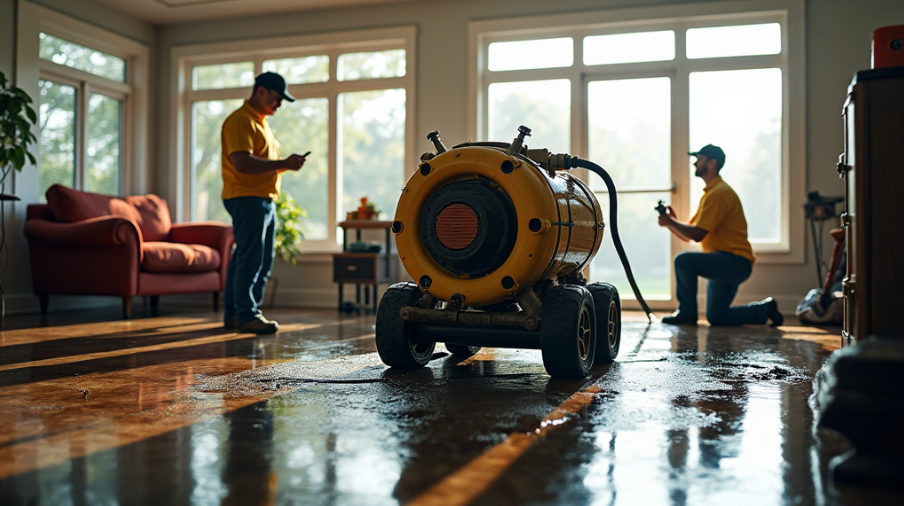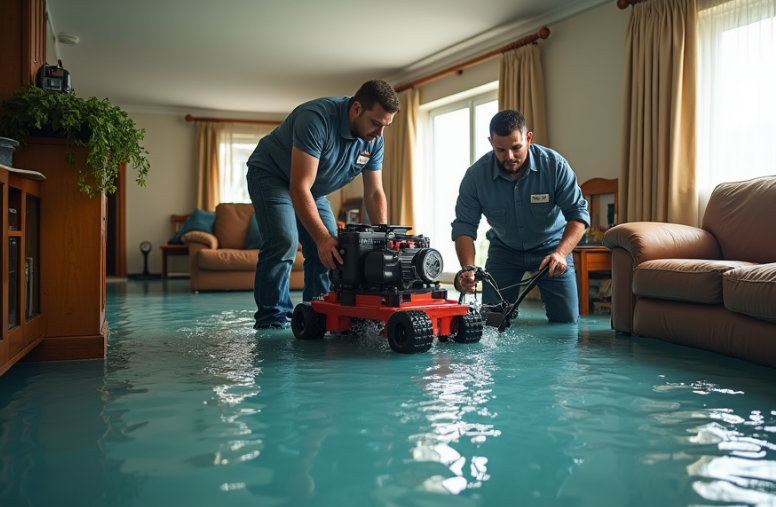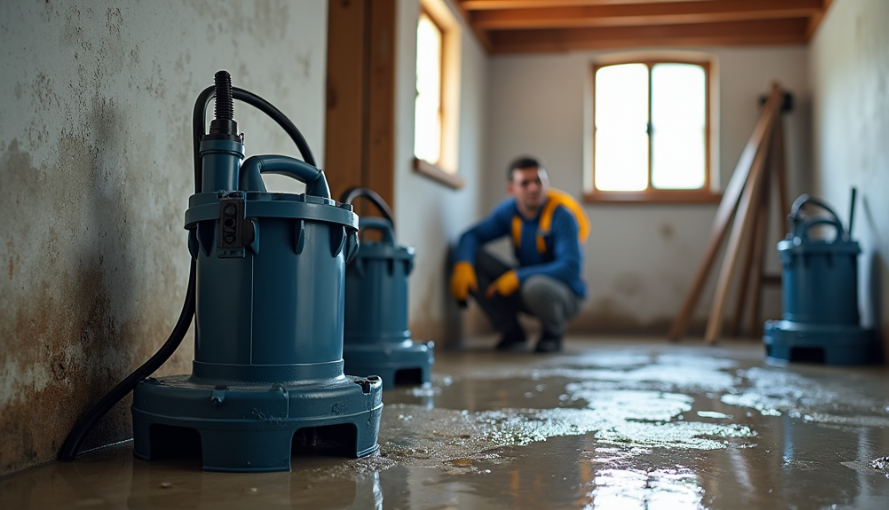How Pumps Effectively Mitigate Water Damage Risks
Water damage is a significant threat to homes and businesses, and pumps play a crucial role in how they help with water damage. These devices efficiently remove unwanted water caused by flooding, burst pipes, or heavy rain. By quickly eliminating excess water, pumps help prevent mold growth and protect property from expensive repairs. In this article, we’ll explore the various types of pumps, how they work, and their vital role in effective water damage control. Understanding these tools can empower you to safeguard your property and respond swiftly to any water emergencies.
Understanding Different Types of Pumps and Their Uses
Overview of Common Pump Types
When it comes to protecting your home from water damage, understanding different types of pumps is vital. You often hear about sump pumps, submersible pumps, and portable pumps. Each type serves a unique purpose. A sump pump is usually found in the basement, collecting excess water and keeping your home dry. Submersible pumps can work underwater, making them perfect for flooded areas. Meanwhile, portable pumps are handy for quick water removal during emergencies, like after a heavy rainstorm.
Purpose and Functionality
So, how do these pumps actually work? A sump pump has a float switch that turns on when water rises to a certain level. This pump then pushes water out of your basement, preventing basement flooding. On the other hand, a submersible pump can be completely submerged in water, pumping it out efficiently. Portable pumps are often lightweight and can be moved to wherever water needs to be removed quickly, such as after a storm or in a flooded yard.
Pump Capacity Considerations
Choosing the right pump isn’t just about type; it’s also about pump capacity. A pump that’s too small might struggle to keep up with rising water levels, while a high-capacity pump can swiftly handle large amounts of water during major flooding events. For instance, if your area is prone to groundwater issues or severe storms, investing in a high-capacity pump can save you from extensive property damage and costly repairs.
Understanding these factors can help you effectively use pumps to mitigate water damage risks in your home.
The Role of Sump Pumps in Water Mitigation
Functionality in Basements
Sump pumps are like superheroes for your basement! They help prevent basement flooding by keeping water levels low. When rain pours or snow melts, water seeps into the ground and can fill up your basement. A sump pump senses when the water level rises and quickly kicks into action, pumping out the excess water. This stops your home from getting damaged and helps avoid messy water damage and scary mold growth.
Installation Insights
Installing a sump pump correctly is crucial for it to work effectively. Place it in the lowest part of your basement, where water tends to collect. Make sure to connect it to a drainage system that leads away from your home. Also, consider a backup system to keep it running during power outages. Doing this right ensures you have the best water removal system in place.
Maintenance Best Practices
To keep your sump pump running smoothly, regular maintenance is a must! Check it every few months, ensuring it’s clean and free of debris. Run a water level test to see how it reacts. If you notice strange noises or it doesn’t turn on, it might need repairs. Regular checks will help avoid breakdowns during a storm when you need it the most.
Why Emergency Services Utilize Pumps

Rapid Response Capability
When floods hit, emergency services deploy pumps quickly. They know that time is crucial to save homes from becoming waterlogged. By using powerful industrial pumps, they can remove water fast, helping families recover faster.
Case Studies of Effective Responses
In one town, heavy rains caused a river to overflow. Emergency services used high-capacity pumps to remove water from homes. Many families were grateful for the speedy flood recovery, which helped them return to their lives sooner. These real-life stories show just how important pumps are in emergencies!
Water Extraction Techniques: Beyond Pumps
Combining Tools for Optimal Results
When dealing with water damage, just using a regular pump isn’t always enough. Sometimes, combining tools gives the best results. Imagine you have a flooded basement. Using a wet vacuum alongside an industrial pump can speed up the water removal process. The wet vacuum is great for getting up the last bits of water that the pump might miss. Plus, it helps with moisture removal, which is key to preventing mold growth later on. Together, these tools create a powerful pumping system that tackles the problem from all angles.
Limitations of Pumping Alone
Even though pumps are essential for flood recovery, there are times when they just won’t cut it. For instance, if you have groundwater seeping in during heavy rain, a sump pump might struggle to keep up. In such cases, you may need other methods, like drainage solutions or water management strategies, to help manage the situation effectively. Not addressing the limits of pumping can lead to bigger issues like structural property damage and long-term health risks. So, understanding when to use additional tools can save you from serious headaches down the road.
By using various techniques and equipment for water extraction, you can better handle flooding situations and protect your home. The key is knowing when to rely on just pumps and when to bring in extra help.
The Importance of Dehumidification Post-Water Damage

Water damage can turn your home into a damp mess. When flooding happens, it’s not just about water removal; you also need to think about what comes next. This is where dehumidification steps in.
Preventing Mold Growth
After a flood, moisture can linger in hidden places like walls and floors. If you don’t act fast, it can lead to mold growth, which is not only unsightly but can also be harmful to your health. Using a dehumidifier helps to pull that moisture out of the air and surfaces. Imagine a sponge soaking up water—that’s what a dehumidifier does, but for your home. By reducing humidity, you stop mold spores from taking root, making your space safer and more comfortable for everyone.
Equipment Utilization
In the battle against water damage, dehumidifiers are your best friends. They work hand in hand with pumps during the water cleanup process. While pumps like sump pumps and submersible pumps extract large amounts of water quickly, dehumidifiers tackle the moisture that remains after the heavy lifting is done. Think of it this way: pumps remove the flood, and dehumidifiers ensure your home stays dry afterward. This combination speeds up the home restoration process and helps you get back to normal living sooner.
In conclusion, don’t underestimate the power of dehumidification after a water damage event. It not only helps in water mitigation but also safeguards your home from future issues, like mold. Stay dry, and keep your home safe!
Community Resources and Flood Prevention Strategies
Local Assistance Programs
In many communities, there are local assistance programs designed to help residents prevent and recover from flooding. These programs often provide water removal services, pumps, and even dehumidification equipment to help keep homes safe. For instance, your local government might offer free workshops on how to install a sump pump or submersible pump. These tools can dramatically reduce the risk of water damage in your basement.
Also, consider reaching out to community organizations that focus on disaster recovery. They can guide you through the steps to protect your home and manage any potential storm damage. Participating in community cleanup events can also build connections and knowledge about effective flood prevention strategies.
Regulatory Measures
It’s essential to understand local regulations related to floodplain management. These rules help ensure that new buildings are safe from flooding and reduce the risk of property damage. For example, regulations may require proper drainage systems to manage stormwater runoff effectively. By following these guidelines, you can create a safer environment for you and your neighbors.
Insurance and Financial Considerations for Water Damage
Understanding Flood Insurance
One of the best ways to protect yourself from water damage is by having flood insurance. This insurance can cover the costs of repairs and water damage restoration, making it crucial for homeowners in flood-prone areas. Without it, the financial burden of flood recovery can be overwhelming.
Claims Process Insights
When disaster strikes, knowing how to navigate the claims process is vital. Start by documenting damage with photos and keeping receipts for any cleanup services. This will simplify your claim and speed up insurance claims processing. Understanding your policy can help you maximize your benefits and ensure you recover from any water emergency quickly.
Taking Control of Water Damage Risks
Having explored how pumps are key players in managing water damage, I feel empowered to tackle any flooding situation. By understanding the various types of pumps and effective water management strategies, I can protect my home from costly repairs. If you’re ready to take charge of your next project, don’t hesitate! Explore our wide range of top-brand construction tools and equipment today! Whether you need to rent or buy, Rentalex has everything to help you succeed. Visit our Tampa store located at 1022 Skipper Road, Tampa, Florida or give us a call at (813)971-9990 for more information.






